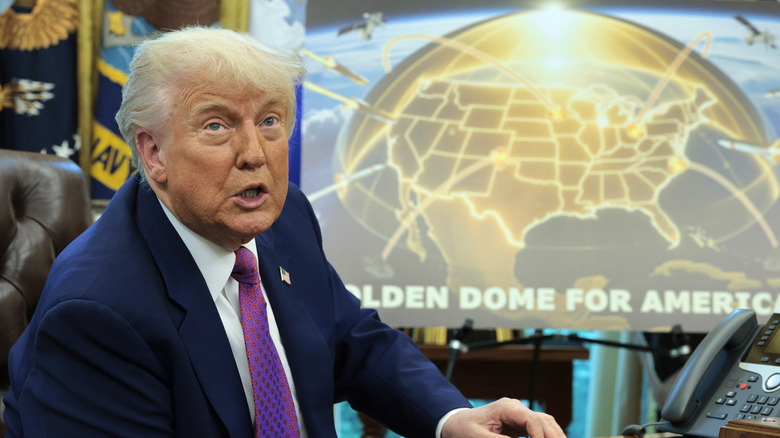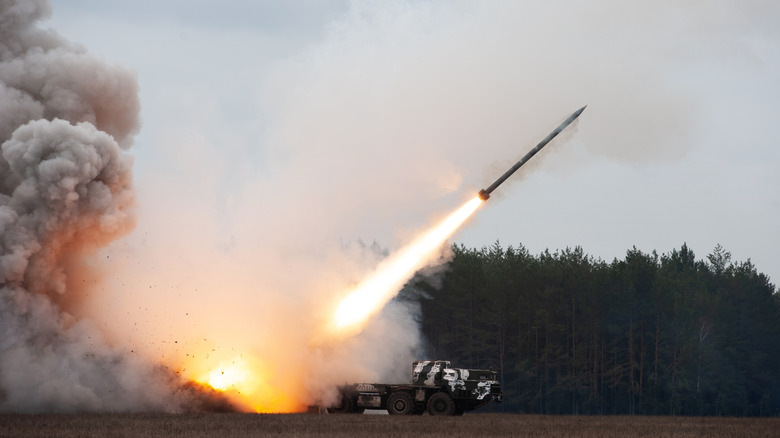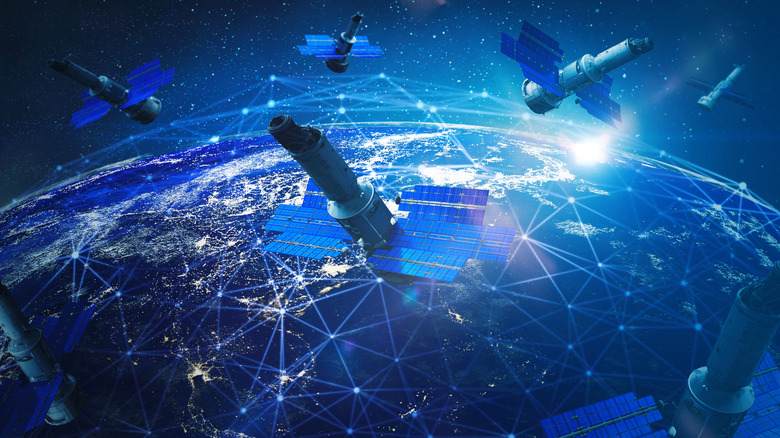How Donald Trump's Golden Dome Missile Defense System Will Theoretically Work
Since he took office, President Donald Trump has made the Golden Dome for America initiative one of his top priorities. and This proposed system is part of the president's effort to modernize the country's defenses (the Pentagon only stopped using floppy disks for nuclear missile control in 2019), however, little was known about the missile defense system and how it would potentially work until Trump took a meeting in the Oval Office with reporters on Tuesday, May 20, 2025.
Dubbed "a revolutionary concept" by Lockheed Martin Corporation, an aerospace and defense company positioned to profit off the venture, the proposed Golden Dome system didn't become public knowledge until this past March in a joint address Trump made to Congress. He likened it to Israel's Iron Dome defense system, which was installed in 2011 and protects the country from short-range rocket attacks. The Golden Dome, however, will utilize new ground, sea, and space technologies to intercept missiles no matter where on Earth or space they are launched from.
Satellites are the key to Golden Dome defeating missiles
The Golden Dome will consist of three layers: one to track threats from space, a second to defeat ground-based missiles, and a third to defeat air and cruise missiles. The director of missile defense at the Center for Strategic and International Studies, Tom Karako, speculated in an interview with NPR that the next big war may partially be fought above Earth's atmosphere. "There's a need to contend with a whole lot of things that are in space and going through space," he added.
That's why space-related technologies are a particularly important part of the Golden Dome. It will harness the functions of satellites — potentially thousands of them — in a vast network similar to the roughly 7,000 satellites in orbit now as part of SpaceX's Starlink system. Equipped with high-tech sensors, the Golden Dome satellites will be able to detect that a missile is being launched and shoot it down with a laser or interceptor shortly after lift-off and before it enters space. In some cases, the missiles will be taken out before they even launch.
This aspect is important because intercontinental ballistic missiles are almost impossible to take down as they travel at hypersonic speeds after reentering Earth's atmosphere. Also, they can deploy decoys that confuse interceptors, so thousands have to go out to make sure that one hits the missile. These factors make the launching period the best time to eliminate these threats. As an additional layer of defense, though, missiles that go undetected until they're already traveling through space will be shot down by defense systems already built in Alaska and California.
The challenges, timeline, and cost of the Golden Dome
The idea of the Golden Dome isn't totally new. Former President Ronald Reagan was planning a missile-intercept system in 1983 to protect against the Soviet Union, but the country collapsed before the vision became reality. While missile defense technology has progressed since then, the physics of protecting the vastness of the United States against airborne attacks is complicated and faces challenges. One particular challenge is the disadvantages of satellites, which could be taken down directly or by overwhelming the system with cluster missile launches. The effects of solar wind on satellites is another potential problem because it can disrupt communication between the satellites and the ground.
Another big hurdle is the cost. The Golden Dome will be possible by expanding current and building new programs in Alaska, Florida, Georgia, and Indiana — with several defense and tech companies being involved. Although President Donald Trump estimates the cost at $175 billion, the Congressional Budget Office estimates it at $542 billion. He expects some of the funds to come from his tax cut and spending bill and more may come from Canada, which he says has expressed interest in participating. If everything goes as he planned, Trump expects the Golden Dome to be completely operational before his term ends.


